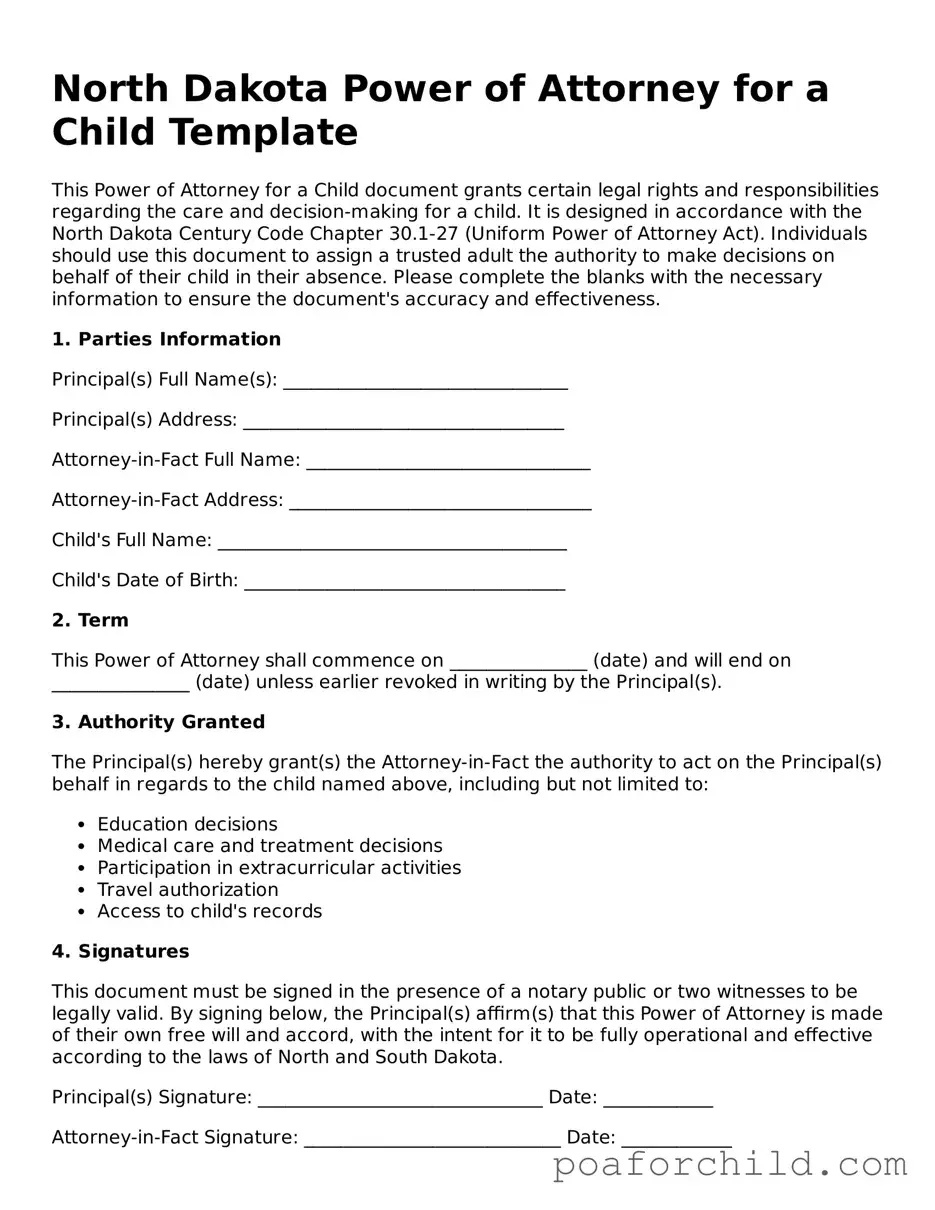Detailed Guide for Using North Dakota Power of Attorney for a Child
Once you've decided to grant someone else the authority to make decisions for your child in your absence, the North Dakota Power of Attorney (POA) for a Child form is the legal document you need. This form allows you to appoint a trusted individual to act on behalf of your child, ensuring that their needs are met during the specified period. It's essential to fill out this form accurately to avoid any misunderstandings or legal issues. Follow the steps outlined below carefully to complete the North Dakota Power of Attorney for a Child form.
- Start by gathering all necessary information including the full legal names and addresses of both the parent(s) or legal guardian(s) and the appointed attorney-in-fact (the person who will make decisions for the child).
- Read the form thoroughly before you start to fill it out. Make sure you understand every section and what it's asking for.
- In the section designated for the "Grantor" details, enter the parent(s) or legal guardian(s) full legal name(s), address(es), and contact information.
- Proceed to fill in the "Attorney-in-Fact" section with the full legal name, address, and contact details of the person you are granting authority to.
- Specify the duration of the power of attorney. Indicate the start date and the end date. If you wish the power of attorney to be effective immediately and to remain in effect indefinitely, check the appropriate box if available.
- Detail the powers you are granting to the attorney-in-fact. Be as specific as possible to ensure clear expectations and responsibilities. This can include decisions related to education, health care, and general welfare.
- If the form has a section for special instructions or limitations to the power of attorney, clearly outline any specific wishes or restrictions you have regarding the care and decision-making for your child.
- Review the form with the attorney-in-fact to ensure they understand the responsibilities and limitations of their role.
- Sign and date the form in the presence of a notary public. Many states require a power of attorney to be notarized to be legally valid.
- Have the attorney-in-fact sign the form if required. This step may vary depending on state laws.
- Keep a copy of the completed form for your records and provide the attorney-in-fact with the original or a copy, as appropriate.
After you have completed the North Dakota Power of Attorney for a Child form, your next steps will likely involve communicating the change to all relevant parties. This might include schools, medical providers, or any other institutions that require notification. Doing so ensures that the appointed attorney-in-fact can act on your child's behalf without unnecessary delays. Keep in mind, it's important to regularly review and update the form as circumstances change to ensure that it still reflects your wishes and your child's needs are being met.
